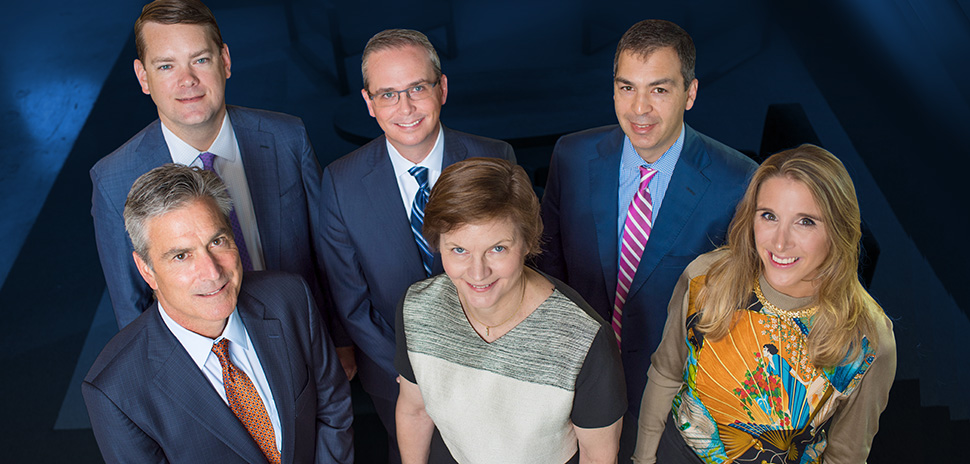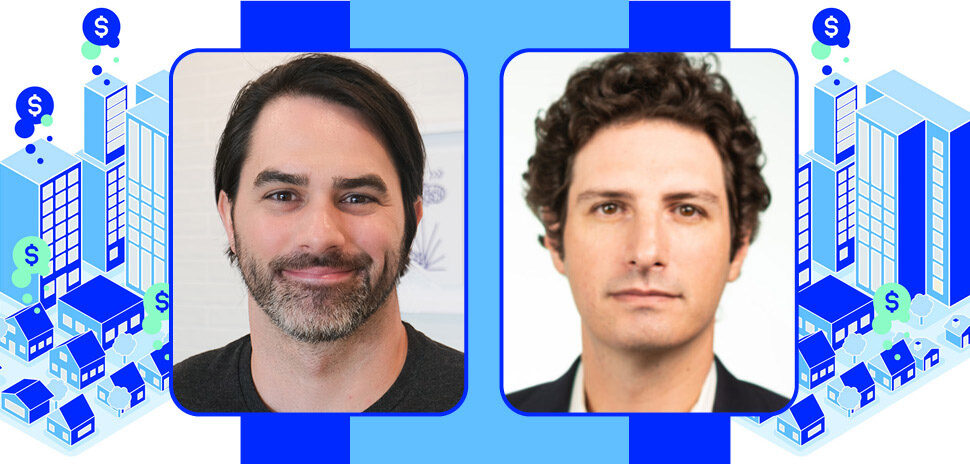![]() Dallas-Fort Worth continues to get denser and more urban, even in unlikely places like the suburbs. With that comes challenges such as gaining community support, betting on the right innovations, and—the topic on everyone’s minds—housing affordability.
Dallas-Fort Worth continues to get denser and more urban, even in unlikely places like the suburbs. With that comes challenges such as gaining community support, betting on the right innovations, and—the topic on everyone’s minds—housing affordability.
North Texas has 50,000 units of multifamily, give or take, set to be completed by the end of 2019. And we’re growing by about 150,000 people annually. Such intense growth is making the region’s multifamily housing market more interesting than ever as technology disrupters, an age-old amenities arms race, and affordability challenges shake out.
In the first of a three-part series on the multifamily sector in Dallas-Fort Worth—a “Market in Motion”—expert panelists discuss the strength of the market, the drivers of demand, changing demographics, and where the money is coming from.
In parts two and three, the panel talks about the role of design and amenities, disruptive trends, affordable housing, the Airbnb influence, co-living, technology, and more.
Meet the Experts
P A N E L
 Sue Ansel
Sue Ansel
As CEO of Gables Residential, Sue Ansel has been with the 36-year-old company for more than 25 years. Gables owns, develops, and manages multifamily and mixed-use projects throughout major U.S. markets, accounting for 30,000 units. Locally, Gables is nearing completion of Gables Water Street in Las Colinas.
 Tom Bakewell
Tom Bakewell
Tom Bakewell co-founded StreetLights Residential in 2011 with its CEO Doug Chesnut and now serves as its President of Development. The 7-year-old company focuses on urban infill multifamily developments and has 15 projects under construction. StreetLights is nearing completion on two Dallas projects, The Christopher at The Union and The McKenzie.
 Evan Beattie
Evan Beattie
Evan Beattie is President and Senior Principal at GFF Architects. In his more than 15 years of experience, Beattie is focused on managing complex residential projects through design and construction phases. GFF is focused on urban infill mixed-use projects that often include zoning changes.
 Rob Bennett
Rob Bennett
Dallas-based Thackeray Partners invests in and acquires multifamily and industrial projects throughout the nation. As a partner, Rob Bennett has more than 15 years of experience, including more than 10 years at Thackeray, where he focuses on its multifamily platform.
 Sumner Billingsley
Sumner Billingsley
Sumner Billingsley is Vice President of Multifamily and Retail Development at Billingsley Co., the family-based development company behind projects such as International Business Park and One Arts Plaza. Sumner is primarily focused on multifamily projects at Austin Ranch and Cypress Waters.
 Paul Geyer
Paul Geyer
Paul Geyer is Managing Director at PGIM Real Estate Finance, a division of PGIM Inc., and the principal asset management business of Prudential Financial. Since his tenure began in 2002, PGIM Real Estate Finance has become one of the largest commercial and multifamily lenders in the U.S. with more than $90 billion of mortgages under management and administration.
The panel was moderated by Julia Bunch for the Dallas-Fort Worth Real Estate Review. The following transcript has been edited for Dallas Innovates.
Where are we in this balancing act of supply and demand of multifamily projects throughout North Texas?
SUE ANSEL: The strength of the market is really the job growth that is coming to Dallas-Fort Worth. There’s a lot of supply that’s being constructed and has been delivered, but the biggest driver of demand on family units is job growth. It’s hard to generalize because it’s very submarket specific. We’re seeing a lot of the deliveries in the Uptown market now, so that’s a little softer than some of the suburban markets where there hasn’t been as much supply delivered.
EVAN BEATTIE: On the design side, we saw a real peak in 2015 in projects in Uptown and the urban areas of Dallas. People really hit the brakes in 2016 and 2017 on new project starts and the design phases.
The affordable housing initiatives that are pending right now [with the city of Dallas] cause people to get pretty nervous about zoning changes, not knowing where policies are going to end up.
That slows things down, but now we’re seeing affordable housing rules starting to settle down. There’s kind of a new wave starting: I think there’s going to be a bit of a gap in deliveries when you look at 2019 and 2020, but it will start picking up again after that.
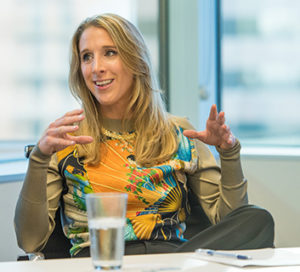 SUMNER BILLINGSLEY: I agree. Supply and demand always fluctuates, and a few years ago there was a little bit more of a demand. Now there may be a bit more supply coming on than we need at the moment. But the equilibrium is headed up in the long term.
SUMNER BILLINGSLEY: I agree. Supply and demand always fluctuates, and a few years ago there was a little bit more of a demand. Now there may be a bit more supply coming on than we need at the moment. But the equilibrium is headed up in the long term.
I think it’s a safe bet because Dallas is going to continue to be more and more attractive.
We’re located in the middle of the country: Companies are going to keep relocating here. We’ve got great schools and great weather. You can work on both coasts.
We have a great quality of life and good bang for the buck. That’s going to continue to attract talent. [Once] there was a gold rush, but this is the job rush: We’ve never seen anything like it. The U.S. is the most important country in the world, Texas is the most important state in that country, and Dallas is the most important city in that state, at the moment. We’re really well positioned. The talent is going to drive more innovation, which will keep this momentum going for a lot of years to come.
TOM BAKEWELL: The market is very resilient—surprisingly so. The jobs were slow to come at first, and now they’ve come quicker in Texas than anywhere else. I get nervous about the supply sometimes. Six months ago, we had four projects, now five projects, in lease up in Dallas. We saw some softness and said, OK, the slowdown is coming. Let’s prepare for it. And then in the last 45 to 60 days, it’s picked back up like it used to be. The latest job numbers are still strong, so we’re encouraged.
“The U.S. is the most important country in the world, Texas is the most important state in that country, and Dallas is the most important city in that state, at the moment.”
—SUMNER BILLINGSLEY
PAUL GEYER: I moved to Dallas from Chicago about 20 years ago. The biggest job growth in Dallas was coming, but everybody was criticizing it, and said that it was [due to] low-paying jobs. I think what we’ve really seen is a movement in Dallas to attract much higher-paying job—engineering, design, and architecture.
It’s really fueled the overall growth in the city. Dallas has become a much more cosmopolitan area. People want to shorten their commutes, and that’s created a much more vibrant demand for Uptown, downtown, and anywhere in the outlying suburbs where there’s a good quality of life and good schools. The job growth has been driven in different pockets, but I think what we’re seeing is pretty sustainable: It seems to be fueling itself.
ROB BENNETT: We’re also bullish on DFW: We think the job growth will continue for as far as we can see. We see pockets of concentrated development [such as] the Frisco or Plano markets. The development has really front-run a lot of the jobs. While there’s some talk about softness in the market, we haven’t seen a majority of those jobs actually arrive yet.
I think there’s going to be demand to fill those up. In general, pockets like Frisco or Uptown certainly have the availability, but [there’s] continued opportunity to be just off of center at a lower price point. One thing I’ll add: Construction costs are a factor that’s going to keep development in check to some extent.
“Dallas has become a much more cosmopolitan area. People want to shorten their commutes, and that’s created a much more vibrant demand for Uptown, downtown, and anywhere in the outlying suburbs where there’s a good quality of life and good schools.”
—PAUL GEYER
Where are we seeing the most opportunity?
BEATTIE: The way people are wanting to live is changing. People want to live in walkable, urban areas. So if you can deliver an affordable product in a walkable market where out your front door you have options to go to restaurants and shopping that’s where people want to be — where you can park your car on Friday and not get in it again until Monday.
Across the price spectrum, whether at Cypress Waters, where there are efforts to create a walkable environment or in a low-rise, mid-rise, or high-rise product, people want to be within a walkable distance.
ANSEL: Some of us are more niche players. We focus our strategy primarily on live-work-play areas. What’s different in the market today is that those areas used to be pretty well defined for us.
Now, companies like Billingsley and others are creating that environment in areas that are outside of the urban core. Clearly there’s a shift in demographics. People are walking and voting with their feet. We have primarily a luxury portfolio. We’re clearly looking in the live-work-play areas around town—wherever those might be.
BILLINGSLEY: The areas we’ve seen that look the most attractive are in North Dallas and Northwest Dallas. That’s because it’s where we’re able to get companies to relocate. That’s where they can build campuses.
People want to have close proximity to work. So if that’s where the young talent is going to be working, then we need to build communities around those offices.
GEYER: We’re probably a little more agnostic on the type of property we’re lending on. If you look at the ’70s and ’80s product, it was cheaper construction at the time and is very affordable today. But it’s 30 to 40 years old, and it needs a lot of capital and repositioning. Investors are going in and saying, “OK, we can put a lot of capital into these properties and still make the rent very affordable compared to the luxury market today.” There’s a lot of demand for that space. Those properties are [typically] in locations that are very infill and dense, but the land values haven’t caught up enough to go to higher floors or to knock it down and build a new property.
The market is still trying to catch up to that from a valuation standpoint, but the rents are there and the people are there: They need a quality place to live, and they are willing to pay for it.
“People are walking and voting with their feet. We have primarily a luxury portfolio. We’re clearly looking in the live-work-play areas around town—wherever those might be.”
—SUE ANSEL
BENNETT: We’re doing new development. And in the value-add space, where we come in and do value-add renovation for older product, we’ve had a lot of focus on that product as well. You can increase your rents 15, 20, or 40 percent, but that’s still a discount compared to the new product. We’ve seen great rent growth there.
It targets the majority of the income bell curve in DFW. We call it “obtainable price product”—intentionally not “affordable” in that connotation. It targets the rent-to-income ratio that is obtainable: It’s affordable to average wage earners.
BAKEWELL: Rob, is there a secondary thought there, that we would rather be doing value-add instead of new development and getting caught with that longer investment process?
BENNETT: Yes, that, and also knowing your investment fund. We’re looking at three- to seven-year increments on an investment. We like cash flow. Those properties have nice yield, but we also think they have the potential to ride a little better if there’s a bump. We see it as having better sustained rent growth than some of the higher end stuff, currently. While both are positive, it’s a bit better in that value-add aspect.
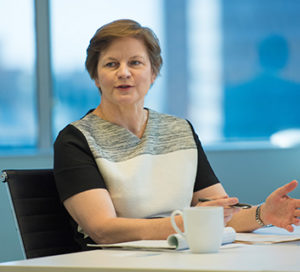
BEATTIE: Tom, you talked about being late in the cycle. Something we’ve seen on the design side is that if we’re working on a preliminary design for a project that’s in a location where somebody can build the exact same thing next door—or on two out of three corners in the neighborhood—that project tends to have a difficult time moving forward. People looking at those deals say, “It’s a commodity. There’s no supply constraint. We’re not interested.” The locations where the entitlements are tough to get—and it’s a great location—those projects seem to have no problem moving forward.
ANSEL: Is that more driven by land availability or entitlement process through the city?
BEATTIE: It’s a bit of both. To go through a zoning change process in Dallas right now, you’ve got to be willing to risk some capital and be patient—and not be trying to time the market. It can take anywhere from six months to two years. It takes a good partner that’s willing to work the process. You have to be collaborative and compromise along the way to get a deal done.
“The locations where the entitlements are tough to get—and it’s a great location—those projects seem to have no problem moving forward.”
—EVAN BEATTIE
ANSEL: Our new developments are on the luxury end, but one of the things that we’re finding is opportunity within our own portfolio.The average age of our portfolio is 10-11 years old, [but] there are products within the portfolio that are older. We’re finding the opportunity to do some of the value-add within our own portfolio to create a differentiated product in the rents.
We’re finding it harder too: We haven’t gone down the path of making a value-add acquisition because pricing has gotten so—
BENNETT: It’s competitive.
ANSEL: Yes, competitive is a good word.
BAKEWELL: There are many value-add buyers out there that are one- or two-person shops. There are so many different groups, and they’re all chasing the same equity. On the development side, there are so many more responsibilities. Even though it’s competitive, it’s not quite as competitive as the value-add sector.
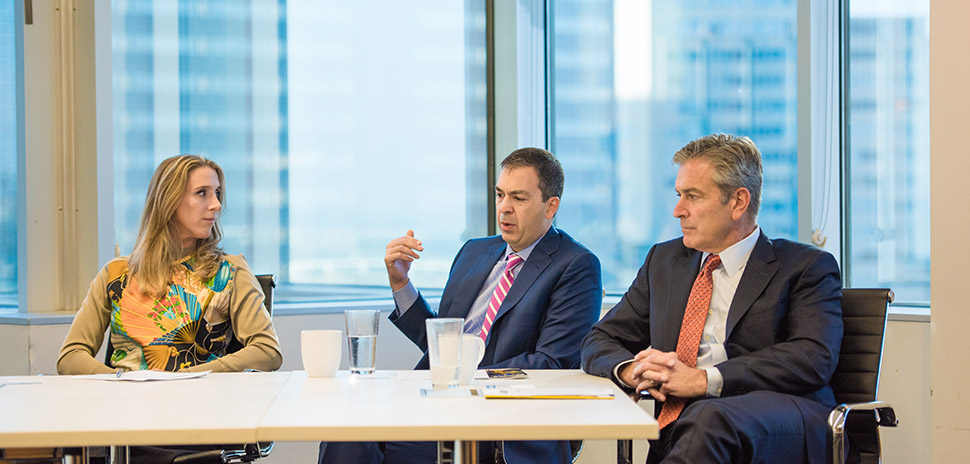
DEMOGRAPHICS
What type of demographics are you seeing in your communities and hearing about from colleagues? Are baby boomers still chasing the lock-and-leave lifestyle?
ANSEL: A good example of that is in this room. As of Monday, Paul moved into a lock-and-leave lifestyle. I’ll let him talk about his experience, but from our standpoint, it’s happening.
We’re building several products that are designed specifically toward the Baby Boomer generation. The demographics of our portfolio are probably a bit older than most. The average age of our residence is 36 years young, but we’re building two or three projects that have a larger footprint and a better design for the baby boomer. Last year in Dallas, [we saw] a 340 basis-point increase in the percent of residents who are over 36 years old.
BEATTIE: In Texas, we’ve seen limited condo construction in the last cycle because there are state laws that made class-action lawsuits pretty easy to file against the team behind a condo project. I think that’s incentivized developers like StreetLights to deliver high-rise product that targets baby boomers.
For the top of the market, where the competition normally would be other high-rise condo projects—although there have been none coming out of the ground right now—you can offer a lifestyle that’s equivalent to the condo experience without HOA dues, without a long-term commitment to a unit, and without having to compete with 100 other sellers in your building.
BAKEWELL: A lot of it is a shift in thinking about it. For a long time, the older demographic, especially, wanted to own their own home.
They thought, “Renting is not for somebody of my stature or level.” That thinking isn’t really out there anymore. Now they think, “Hey, it’s convenient.” There are great new places, great locations, and lots of amenities. … A lot of those people are selling a house. Maybe they have a lake house or a house in Santa Fe. Or they’ve got grandkids somewhere else, and they want to spend more time with them. It’s a good alternative for them.
BEATTIE: Some of the tax law changes that have happened have also dis-incentivized home-ownership.
BAKEWELL: I think it’s more the change in the thought process, because I saw the shift happening before the tax came into play.
ANSEL: It’s the single biggest change in the multifamily industry since I’ve been in it, and I’ve been in it longer than most of you. We’ve gone from apartments being not a choice—an optimal choice—to today, when multifamily is seen as a lifestyle choice people want to make. And we’ve changed the product that we delivered. When I got out of school, apartments were very different.
“A lot of it is a shift in thinking about it. For a long time, the older demographic, especially, wanted to own their own home. They thought, ‘Renting is not for somebody of my stature or level.’ That thinking isn’t really out there anymore.”
—TOM BAKEWELL
GEYER: As a tenant, I would say—
ANSEL: Resident. Resident, Paul.
GEYER: I stand corrected, and thank you for that, because my esteem just went up. From [our personal experience], it was more that we were in a school district with a nice home that our kids loved, but now our kids are out of the house. So they call us “empty nesters,” but the kids come back.
You still like the house, and you’re still very attached to it, but for us, we looked at how many weekends we’re out of town visiting kids, moving a kid, picking them up from college … then we looked at the upkeep of the house: There was something very attractive about just writing a check every month and not having to worry about it.
When you look at a condo, you have assessments. And, if you have an elevator and a doorman you’re looking at thousands of more dollars. That’s not as appealing when you start thinking about it. For us, it was an easy way to have a landlord in charge of the building and be able to live. You’re not worried about the property tax, the swimming pool, the yard when the sink’s clogged—you’ve got somebody there who’s just going to show up to help out.
BAKEWELL: When you look at how high our real estate taxes are in Texas, most people that we’re trying to target for The McKenzie, for instance, can sell their home and live there for equal to or less than what they paid in property taxes. That’s not even taking into account all the upkeep on a house or your mortgage.
BENNETT: A lot of this discussion has been about renters by choice, which we’ve definitely seen. That’s clearly a shift in the market, but there also are renters by necessity or the people who have delayed moving out of a rental. There’s a huge tailwind for the multifamily market, and that will continue for some time. Looking at the millennials and baby boomers, and then Gen Z—the youngest of those groups are delaying marriage and delaying having kids, if they get married at all. That’s a huge demographic shift that’s going to keep that rental demand in all tiers of the market, not just the rental by choice.
Are you seeing a larger concentration of the renter-by-choice demographic or married with kids residents?
ANSEL: To Rob’s point, a big reason why people move out of apartment homes is because of the age of their children. It’s a little bit rent by necessity, but some of that is also renter by choice. We’re seeing people stay within our communities until their children get to school age.
They like the lifestyle. So there may be some increase in that for a period of time. I don’t think demographics have shifted such that young adults will not become their parents and not move out to a home. They’re just delaying it.
BENNETT: I saw in a Pew research poll that the millennial generation still desires homeownership at some point—that hasn’t changed. The shift that’s most important for our industry is that they’re comfortable staying in rental. Maybe at some point, they will want to own a home and move out, but they’re in no hurry.
BAKEWELL: The millennials travel more than we did, and the apartment lifestyle lends itself to that. The baby boomers coming in are doing the same thing—traveling more than the previous generation did.
BEATTIE: It’s more about experiences than possessions these days.
“The shift that’s most important for our industry is that [millennials are] comfortable staying in rental. Maybe at some point, they will want to own a home and move out, but they’re in no hurry.”
—ROB BENNETT
BILLINGSLEY: There’s also something that’s noncommittal about the millennials: This is very much the “swipe right, swipe left” generation. I have friends who live in Uptown, and they’re moving almost every year when their lease comes up because there’s a new amenity: There’s a new pool, there’s a new clubhouse. There’s this fear of “What if I buy a house and miss out on something else that’s even better?”
BENNETT: We do have renters who desire to move out into single-family homes, but we haven’t been building enough. If we talk about development on the multifamily side, maybe we’re peaking here in DFW in deliveries, but we’re behind on delivery of single-family homes. I think fewer people currently desire it, but there are fewer options for affordable single-family homes to get you out of a rental.
BAKEWELL: Then you add onto that, home prices were up 50 percent in the last seven years in the region.
ANSEL: There are data points out there that show homeownership rates going up, but if you dig into it, a lot of the rent-to-buy are renters moving out of single-family rentals as opposed to multifamily rentals. You have to dig into the details to understand some of those stats.
 GEYER: Some of the infrastructures that we need in order to maintain people staying in an apartment complex would be a school or a daycare.
GEYER: Some of the infrastructures that we need in order to maintain people staying in an apartment complex would be a school or a daycare.
Many cities have been putting in schools for the last 10 years, but Plano, [for example], restricts apartment supply. And [other] suburban locations have a hard time adding more density because it’s going to put a strain on the infrastructure.
You don’t really hear about DISD building new schools or looking into Uptown for alternative education locations where they can have more high-rises and have kids actually walk to the school. It’s not there. It creates a situation where folks are going to have to move once a kid gets to a certain age.
ANSEL: My hope is, as young parents start getting more involved in schools, they’ll make a difference in the in-town school districts. We’ve got an example within our organization: A young gal who has a child has gotten very involved. She’s going to be president of her parent-teacher organization in DISD, and she’s making a difference.
GEYER: If you add 350 people a day for five years—that’s a lot of people. [Of those], how many are kids? How many kids are in a classroom, how many teachers, how many bricks and mortar do you need? It’s quite a bit.
BEATTIE: I recently read the fastest-growing age demographic in State Thomas is between the ages of 0 and 4. When you drive through or walk around State Thomas, you see more and more people with strollers. Millennials don’t want to move out of that urban lifestyle. How we, as a city, help provide them the education amenities they need is important. They deserve environments that really define the next generation’s success.
BILLINGSLEY: At Cypress Waters, much more so than any of our urban properties, we see a lot of kids who are in middle school because it falls into Coppell’s school districts. Families are going to get into those apartments because it’s ranked 6th best in the state. They’re willing to ride it out and stay a lot longer.
CAPITAL
Looking across the region, where is multifamily capital coming from and has that changed recently?
BENNETT: We’re seeing institutional equity and forward capital looking at deals that they wouldn’t traditionally seem to look at. What I mean by that is more secondary locations—still primary first-tier markets but more location and more value-add older product.
BAKEWELL: There’s been so much wealth creation in the last seven to 10 years. We see a lot of high net worth individuals out there, not only buying properties but putting equity into development deals. Individuals are beating out institutions on properties [that would have been unheard before] — they’re coming in and buying $120 [per square foot] assets because they think it’s a safe investment long-term.
GEYER: Debt appears the same. We not only lend money on behalf of the insurance company, but we lend money on behalf of institutional investors with an institutional appetite. They’ve come to us and said, “How do we participate in mortgaging?” “How do we get the private mortgages that Fannie Mae and Freddie Mac can buy on the public market?” But they can’t participate in the private market because they don’t have a distribution system.
We’ve actually benefited from not only our asset management capabilities across the world, but in the U.S., especially on the mortgage side. … Currently, we have close to $4 billion we’re investing in mortgages for those clients. A significant portion of that is foreign capital seeking to invest in commercial and multifamily mortgages in the U.S. The consistent returns and the risk-based returns that we’re seeing are driving demand — and more demand for U.S. mortgages.
ANSEL: From an equity standpoint, we see a lot of foreign capital interested in investing in the United States—a lot of Canadian and European capital. [Dallas-Fort Worth] is a great place to invest. It’s seen as a very steady and safe place to invest — with much better returns than a lot of those countries can get locally. My impression is Canadian investors seem to be ahead of the curve, and so I find it a good sign that they tend to be interested in our markets. To your point earlier, Sumner, it’s a really solid economy.
A version of this article appeared in the Dallas-Fort Worth Real Estate Review, Summer 2018.
READ NEXT
DALLAS-FORT WORTH: A MARKET IN MOTION
A PANEL OF EXPERTS ON MULTIFAMILY REAL ESTATE IN THE REGION
PART ONE
Ch-Ch-Changes: Dallas-Fort Worth Multifamily Experts Talk About a Market in Motion
In the first of a three-part series on the multifamily sector in Dallas-Fort Worth—a “Market in Motion”—expert panelists discuss the strength of the market, the drivers of demand, changing demographics, and where the money is coming from.
PART TWO
Market in Motion: Multifamily Experts on Density, Affordable Housing, and Community Engagement in Development
Part Two delves deeper into the multifamily market, looking at ways the business community drives success, the ins and outs of affordability, urban-suburban developments, co-living, the challenges that come with the urban experience, and the Airbnb influence.
PART THREE
Market In Motion: ‘How Do You Design and Adapt In An Environment Where You Know it Will be Different Tomorrow?’
In Part Three—the last in the series—the real estate experts discuss the multifamily sector: How amenities have evolved, the rise of IoT and emerging technologies, disruptive trends, the impact of transportation, sustainability, and what the future holds.
Dallas Innovates, Every Day: Sign up for the enewsletter.
MORE ON REAL ESTATE
Green Building Public & Education LEED-ers in Dallas-Fort Worth
Developers, designers, and cities are pushing sustainability forward in North Texas, creating friendly and beautiful structures.
13 Pioneering DFW Projects In LEED
Developers, designers, and cities are pushing sustainability forward
Placemakers: For Todd Interests, Revitalizing a Downtown Dallas Neighborhood is a Family Affair
East Quarter continues Todd Interests’ track record of investing in properties and turning them into unique landmarks in the city.

